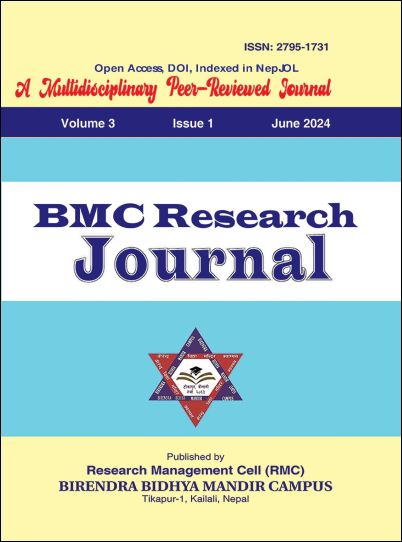Mortality Anxiety and Aesthetic Engagements: A Reading in Katherine Anne Porter's Pale Horse, Pale Rider
DOI:
https://doi.org/10.3126/bmcrj.v3i1.69172Keywords:
aesthetic, pandemic, affirmative, ecstasy, freedomAbstract
The article analyses the effect of performance arts (dance, music, and writing) on the central character Miranda in Katherine Anne Porter's novella Pale Horse, Pale Rider. The study situates itself within the discourse of pandemics and the discourse of expressive arts. In addition to establishing the correspondence between mortality anxiety and aesthetic engagements, it explores the testimonies of performance arts in Pale Horse, Pale Rider and its impact on its central character Miranda who lives a stressful life induced by the Spanish influenza of 1918 and World War I. Dancing, singing, and writing are expressive activities that belong to the world of aesthetics and senses. Besides, as the findings of the study suggest, they are affirmative responses of Porter against the war and pandemic of 1918. They offer pleasure, ecstasy, escape, and liberty.
Downloads
Downloads
Published
How to Cite
Issue
Section
License
Copyright (c) 2024 The Author(s)

This work is licensed under a Creative Commons Attribution-NonCommercial 4.0 International License.
This license enables reusers to distribute, remix, adapt, and build upon the material in any medium or format for noncommercial purposes only, and only so long as attribution is given to the creator.




